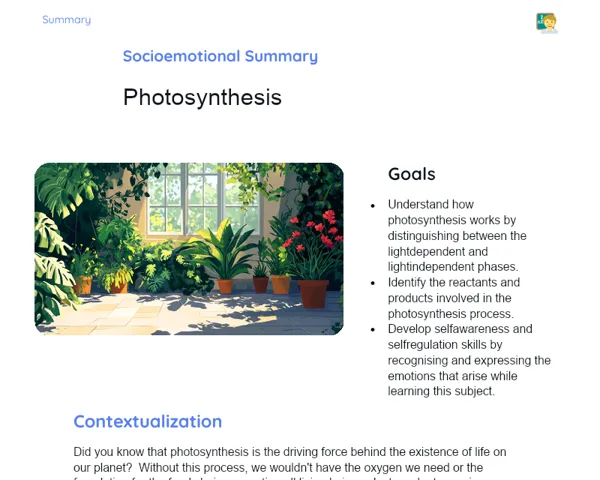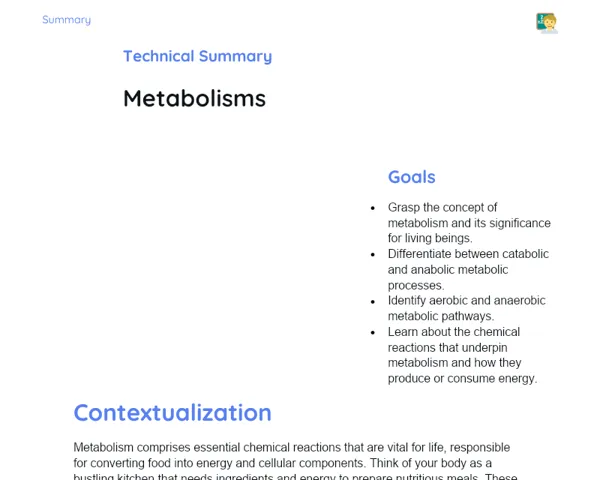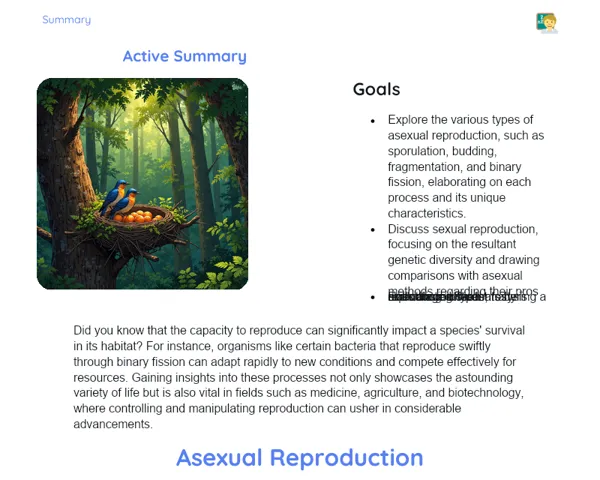Goals
1. Understand the concept of evolution and the mechanisms that drive it, such as natural selection and mutation.
2. Identify the causes and consequences of evolution for various species over time.
3. Recognize the significance of species adaptation to their environment for survival and reproduction.
Contextualization
Evolution is a crucial process for grasping the biodiversity of our planet. From Charles Darwin’s foundational ideas on natural selection to the latest advances in genetics and biotechnology, evolution explains how various species modify over time in response to their environments. For instance, during the Industrial Revolution, the peppered moth shifted its coloration to better blend in with soot-blackened trees, showcasing natural selection and reinforcing the importance of adaptation for survival.
Subject Relevance
To Remember!
Concept of Evolution
Evolution is the process by which species change over time through genetic variations and natural selection. This leads to adaptations that enhance their chances of survival and reproduction in their environments.
-
Evolution is an ongoing and ever-changing journey.
-
It occurs via genetic variations that are passed down to offspring.
-
Natural selection is a vital component of evolution, where individuals better suited to their environment are more likely to survive and reproduce.
Natural Selection
Natural selection is the process by which certain traits become more or less prevalent within a population, based on their effects on individual survival and reproduction. This concept, introduced by Charles Darwin, is central to evolutionary theory.
-
Individuals with advantageous traits have a better chance of surviving and reproducing.
-
These traits get inherited by the next generation.
-
Natural selection can lead to specific adaptations within a species.
Mutation
Mutation refers to changes in the genetic makeup of an organism. These alterations can arise from errors during DNA replication or external factors like radiation. Mutations are essential for creating genetic variation, which is the foundation for evolution.
-
Mutations can be beneficial, neutral, or detrimental.
-
Beneficial mutations can confer survival advantages to an organism.
-
Without mutations, there wouldn't be the genetic diversity needed for evolution.
Species Adaptation
Adaptation is the process through which a species becomes more suited to its surroundings. It results from genetic variations that provide advantages in survival and reproduction in specific environments.
-
Adaptations can be structural, behavioral, or physiological.
-
These adaptations enhance the likelihood of survival and reproduction.
-
Adaptations stem from evolutionary processes over time.
Practical Applications
-
Creating new medications in biotechnology by leveraging the principles of evolution.
-
Devising environmental conservation strategies to protect endangered species by understanding their adaptations and evolutionary connections.
-
Implementing genetic improvements in agriculture by using evolutionary concepts to produce more resilient and higher-yield crops.
Key Terms
-
Evolution: The process of change in the characteristics of a population over generations.
-
Natural Selection: An evolutionary mechanism where those best adapted to their environment have a higher chance of thriving.
-
Mutation: A change in genetic material that introduces variation within a population.
-
Adaptation: The process through which a species becomes better suited to its environment.
Questions for Reflections
-
How can evolution shape the future of medicine and the development of novel treatments?
-
Why is genetic variability crucial for the survival of different species?
-
In what ways can an understanding of evolutionary processes aid in biodiversity conservation?
Exploring Natural Selection in Action
This engaging challenge aims to deepen students' understanding of the natural selection process through an interactive simulation.
Instructions
-
Form groups of 4 to 5 students.
-
Each group should choose an example of natural selection (e.g., the peppered moth or Darwin's finches).
-
Conduct research on your example and explain the initial characteristics of the population.
-
Simulate an environmental event affecting the population (like pollution or food scarcity).
-
Detail the impact of the event on the population and identify advantageous traits.
-
Clarify how these traits become more prevalent in future generations.
-
Groups will present their simulations and findings to the class.



